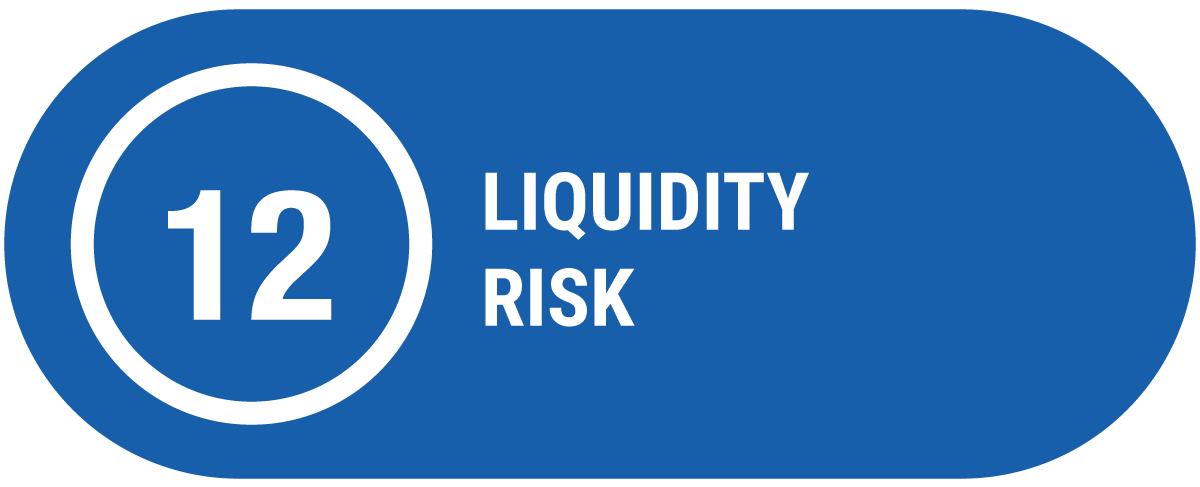OUR BUSINESS
STRATEGIC TRADE-OFFS
IMPACTING OUR CAPITALS

Apart from creating and preserving value, there are instances where value is diminished through our activities. When making decisions on how to manage our business, we consider the trade-offs between capitals: we aim to maximise positive outputs and outcomes and limit negative impacts.
The trade-offs that we have made during the reporting period and the rationale for our decisions are reflected below.
Trade-offs in our use of financial capital
The investment portfolio allocation presents trade-offs: increasing investment in East Africa
As per the NSSF Investment Policy, the Fund can allocate a maximum of 55% of its portfolio to investments within Uganda. Consequently, the Fund needs to explore alternative investment opportunities in the remaining East African region. In this pursuit, additional investments were made in treasury bonds in Kenya. However, the performance of the Kenyan shilling against the US Dollar had a negative impact, affecting the bottom line during the financial year.
Key actions:
During the financial year UGX 583 Bn was invested in Kenya through treasury bonds and equities. This increased the Funds currency exposure amidst depreciating Kenyan shillings. The Fund takes a bit of comfort in the favourable tax treatment in Tanzania and Kenya (withholding tax rate is 10% for securities with maturities above 10 years and tax exemption for infrastructure bonds) to partly counter the foreign exchange risks as we keep investing in these markets. The Fund is also exploring opportunities in alternative investments such as major oil and gas sectors, as well as investment in the major infrastructure projects within Uganda. This will provide the opportunity to diversify our investment portfolio and curtail some of the investment risks in our current exposure.
Long term positive impact

Short term negative impact
Risks

Material Matters
Trade-offs in our use of financial capital
The investment portfolio allocation presents trade-offs: increasing investment in fixed deposits while reducing investment in treasury bonds
Due to the implementation of Section 20a of the NSSF Amendment Act, the Fund remains cognisant of the need to balance its fixed income portfolio to provide for shorter term investments in fixed deposits and treasury bills. The intention is to provide short term cashflows needed to pay midterm access to benefits for qualifying members. Consequently, the continued investment in the short-term fixed income portfolio reduced the return on investment by at least 1% point from the return earned in the previous financial year of 11.9%.
The Fund paid out UGX 1,199 Bn in 2023 compared to UGX 1,189 Bn in 2022, representing an increase of 6.3% above the planned pay out of UGX 1,127 Bn.
Key actions:
To effectively manage liquidity and meet the midterm benefit obligations, the Fund continues to prioritise significant investments in short-term fixed income assets bills with lower returns rather than opting for long-term, high-yield treasury bonds.
Long term positive impact

Short term negative impact
Risks


Material Matters
Trade-offs in our use of human capital
The organisational redesign involved trade-offs: aligning the organisational structure with the Fund’s Business Model
To meet the needs of its members and enhance the customer experience, the Fund continued to realign its operating model. This process included the creation of new roles and the dissolution of positions that were no longer relevant, resulting in some staff members choosing to leave the organisation. During this exercise, the Operations Department was dissolved and 112 staff were reallocated to the Technology and Enterprise Solutions Department (6) and Commercial Department (106). Furthermore, a Strategy Department was established as a separate unit from the Managing Director's Office, and a Head of Strategy was elevated to the Executive Committee (EXCO). This restructuring also led to 24 staff members choosing to depart from the organisation.
Key actions:
The Fund conducted a thorough assessment and realignment of its business processes and staff structure. This was done to cultivate a more agile and skilled workforce capable of adapting to changing business requirements. In line with the Board's priority of ensuring job security, the Fund invested in a reskilling programme to address any skill gaps and facilitate staff reallocation within the organisation, where feasible.
Long term positive impact



Short term negative impact
Risks

Trade-offs in our use of manufactured and financial capital
The trade-offs involved in increasing IT capacity of building more resilient and agile IT systems
The implementation of the Fund's Pension Administration System, OctoPAS, as part of the digital acceleration strategy, has generated numerous opportunities. These opportunities include the ability to develop new products, which necessitated extensive business process re-engineering and the introduction of new roles, such as data science experts, business analysts, data engineers, including a focus on testing and quality assurance.
Key actions:
During the financial year, the Fund's primary focus was to enhance capacity within the IT Project Team. Efforts were made to identify additional opportunities to customise OctoPAS, thereby expanding the range of products and services offered in the short and medium term.
Long term positive impact


Short term negative impact
Risks


Material Matters
Trade-offs in our use of financial, social, and relationship capital
The trade-offs of affordable houses: Building more affordable houses for our stakeholders
Real estate forms part of our investment portfolio, and as a country we have a housing deficit of approximately two million houses. However, it remains quite costly to construct decent and affordable houses in Uganda because of the prohibitive cost of basic infrastructure including land, roads, telecom, water, and electricity.
Such costs increase the fixed costs of real estate development and affect the price of the final house to the consumer. As a result of the societal concerns for affordable housing, this compromises our need for the real estate project to provide a good return to the members (200 basis points above the 10-year average inflation).
Key actions:
During the year, the Fund progressed well with the construction works of the affordable houses in Temangalo whose feasibility study revealed that the site will be able to provide affordable houses to the middle-and lower-income segments of our society. The phased project of 3,500 housing units is on course, and phase one which has 550 housing units has a target completion date set for December 2024.
Long term positive impact


Short term negative impact
Risks


